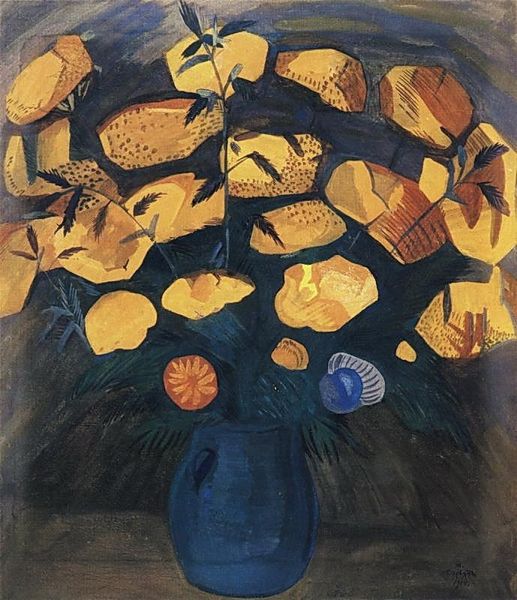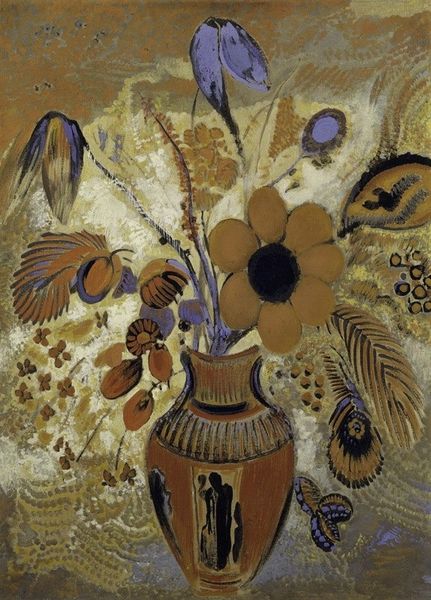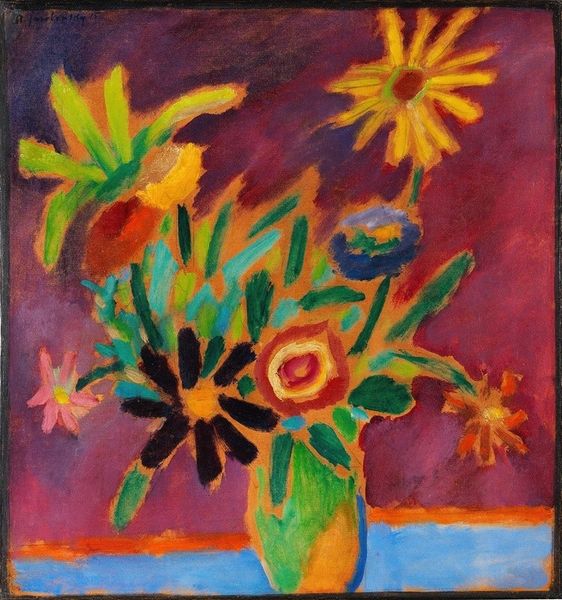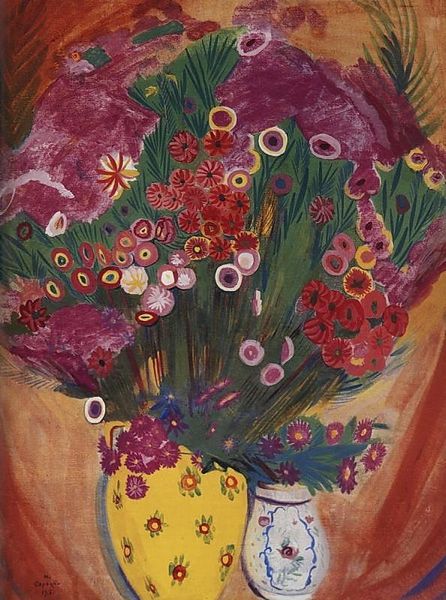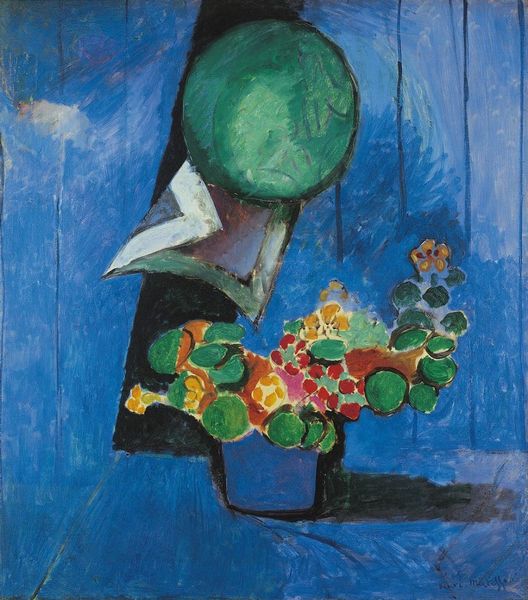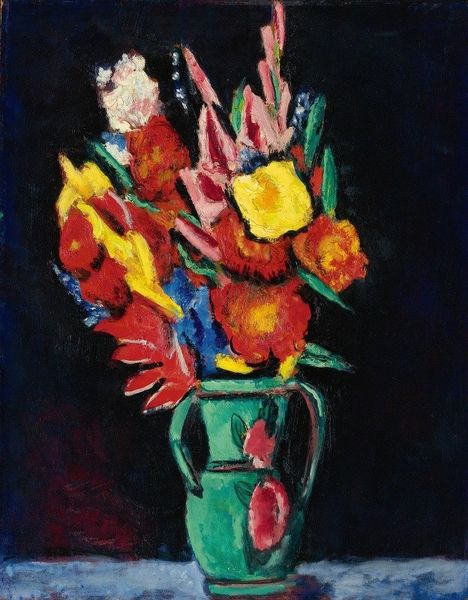
Dimensions: 88 x 79 cm
Copyright: Public domain US
Curator: Looking at Martiros Sarian's "Flowers of Kalaki" from 1914, the vivid colours and bold impasto work immediately stand out. Sarian’s use of oil paint to render such a scene marks an interesting period in his career, just before the first World War really began to shake the avant-garde. Editor: Right. My gut feeling? It's a vibrant, almost aggressively cheerful bouquet, sitting almost stoically in its heavy vase, considering its explosive dynamism. Is it me, or does this have echoes of Matisse's Fauvist sensibilities? Curator: Absolutely, you're spot on. While some might also categorize Sarian with Post-Impressionism, "Flowers of Kalaki," really showcases a merging of styles. This period witnessed Sarian exploring light and color through Orientalist themes as well, giving a rich depth beyond the immediate decorative impact of the painting. It reveals how Armenian artistic circles were absorbing various movements. Editor: Interesting. Knowing about the Armenian element makes it almost defiant – that burst of colour, given the historical context, resonates a little more now as an act of cultural preservation, or perhaps even spiritual rebellion against impending darkness. Curator: Indeed. When placed alongside its cultural history, "Flowers of Kalaki" takes on additional meaning as an early contribution to debates of art as a marker of identity and a tool for resistance and celebration in a time of conflict. Its joyful, almost utopian vision underscores the stakes of this early period in the history of abstract movements. Editor: Yes! The painting transforms itself, the initial almost simple bouquet transforms into a poignant historical reflection and is now more haunting in some ways than cheerful. Thank you for sharing insights with me today, curator! Curator: My pleasure; thanks for these poignant reflections, editor!
Comments
No comments
Be the first to comment and join the conversation on the ultimate creative platform.
